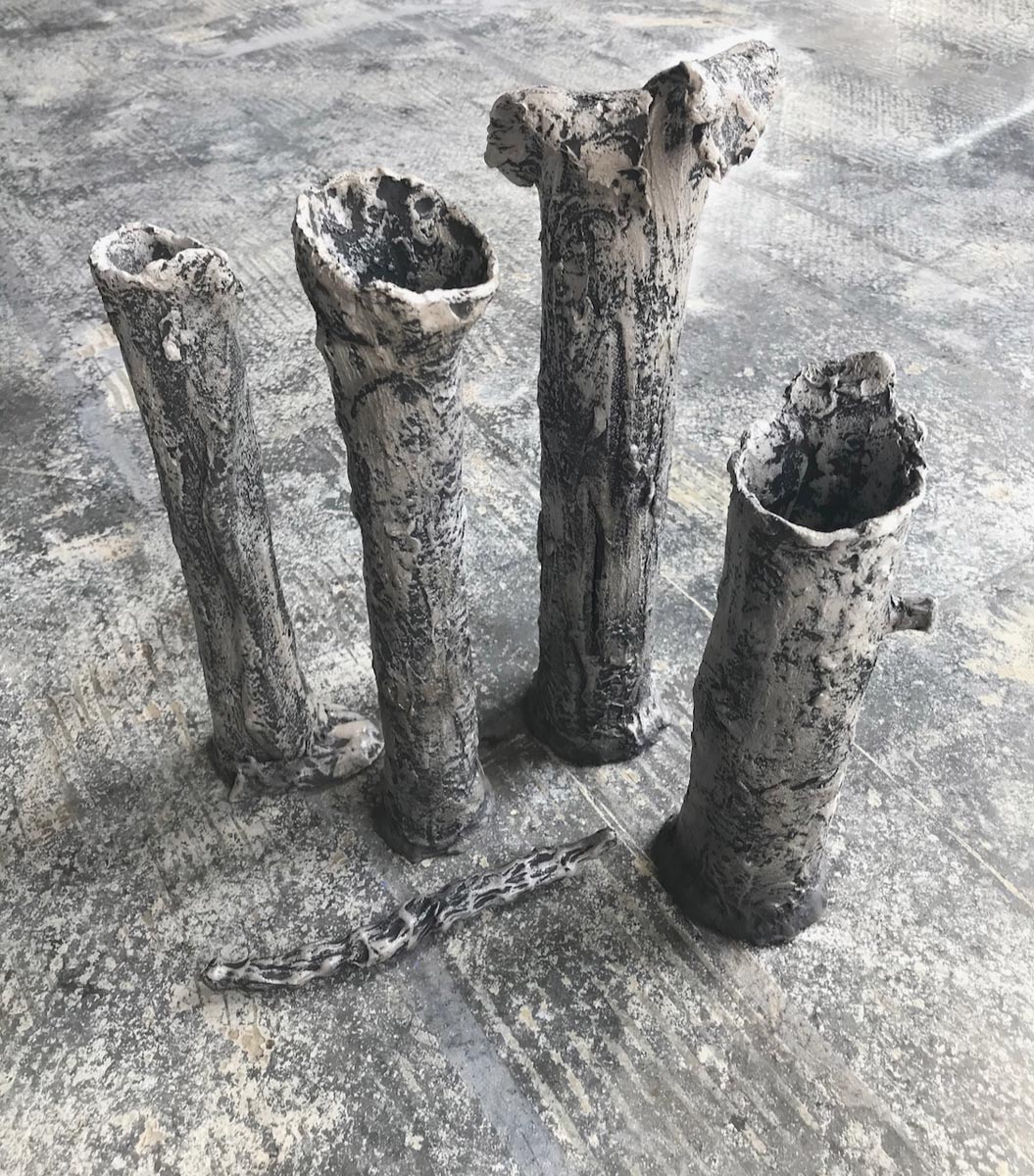In the last couple of decades, Tracy Gurdian has emerged as Naples’ most prolific and respected potter, beloved as much for her one-of-a-kind ceramics as for the Herculean and dangerous method it takes to make them.
Gurdian practices what’s known as raku, a type of Japanese pottery in which the clay is maneuvered with metal tongs in a kiln that reaches more than 1,800 degrees Fahrenheit. The procedure requires two people, equipped with protective goggles and gloves, who move the pieces from the kiln into a post-fire reduction chamber (basically a large can filled with combustibles). This starts another blaze where the ceramics sit, soak up carbon and oxidize, then get doused with water. The chemistry caused by these extremes creates the variety of colors and surface effects that makes raku so popular.
“Some pieces might not come out at all, or they might break, and that’s why I love it,” says Gurdian. “It’s like life. You can’t control what happens.”
A dancer until an injury sidelined that career, Gurdian fell into ceramics as a way to deal with depression. “I thought I would be miserable, but the first time I squeezed clay between my fingers it felt like I was choreographing a dance,” she says. “I had the biggest smile on my face.” A raku class came later when she saw a sign that read “Here, not everything makes it through the fire, so you have to learn to let go of it” and knew it was meant for her. In 2013, she launched Tovari (a portmanteau of her children’s names, Tova and Ari), word of mouth got around, and soon she was designing collections for the likes of Kravet, Bergdorf Goodman, and Gump’s. In 2019, she traveled to Japan to see where raku was born and learn kintsugi, the art of repairing broken pottery with lacquer dusted with powdered gold, silver, or platinum, and incorporated that into her Naples practice, where she lets nature inspire her designs.
But as much success as her ceramics have brought her, Gurdian is not one to sit still. After spending last summer in Spain, she decided to incorporate foliage painting into her oeuvre. This process, which Gurdian describes as “pressing real botanicals into plaster using the relief as texture” is a welcome departure from the menacing nature of raku—at least for now. “Raku is a big adrenaline rush in which everything is timed, and it can be exhausting,” she says. “Foliage painting is transformative and meditative. It’s exactly what I need right now.”







![“I used plaster, watercolor, graphite, and foliage on canvas to create Land Escape,” says Gurdian. “This is a statement piece on the disconnect in society due to [digital devices] and how time spent outside is less. I used color to show how sun exposure can lower stress.”](jpg/i-used-plaster-watercolor-graphite-and-foliage-on-canvas-to-create-land-escape-says-gurdian.-photo-courtesy-of-tovari-designs.jpg)











Facebook Comments